Merkle timber are a elementary a part of what makes blockchains tick. Though it’s positively theoretically potential to make a blockchain with out Merkle timber, just by creating large block headers that instantly comprise each transaction, doing so poses giant scalability challenges that arguably places the power to trustlessly use blockchains out of the attain of all however probably the most highly effective computer systems in the long run. Due to Merkle timber, it’s potential to construct Ethereum nodes that run on all computer systems and laptops giant and small, sensible telephones, and even web of issues units akin to people who can be produced by Slock.it. So how precisely do these Merkle timber work, and what worth do they supply, each now and sooner or later?
First, the fundamentals. A Merkle tree, in probably the most basic sense, is a means of hashing a lot of “chunks” of information collectively which depends on splitting the chunks into buckets, the place every bucket accommodates just a few chunks, then taking the hash of every bucket and repeating the identical course of, persevering with to take action till the entire variety of hashes remaining turns into just one: the foundation hash.
The commonest and easy type of Merkle tree is the binary Mekle tree, the place a bucket at all times consists of two adjoining chunks or hashes; it may be depicted as follows:
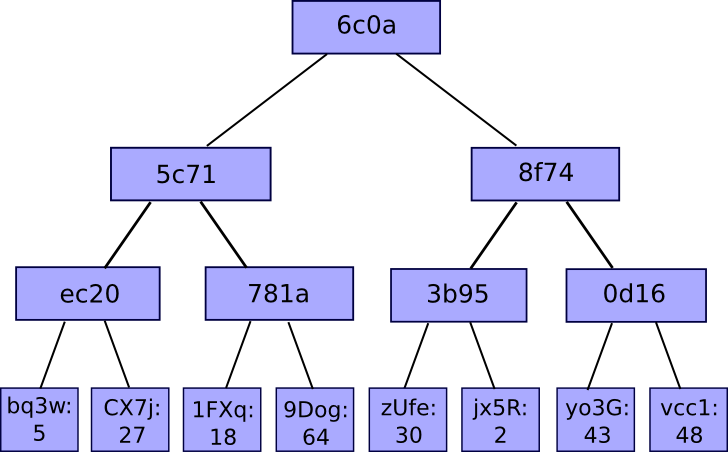
So what’s the advantage of this unusual type of hashing algorithm? Why not simply concatenate all of the chunks collectively right into a single huge chunk and use an everyday hashing algorithm on that? The reply is that it permits for a neat mechanism referred to as Merkle proofs:
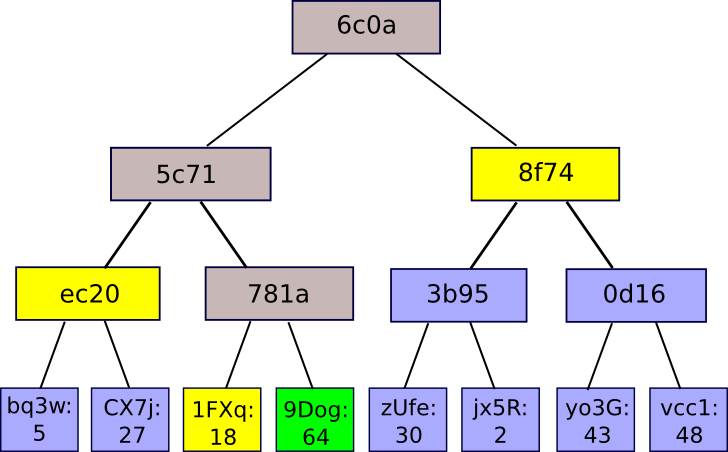
A Merkle proof consists of a piece, the foundation hash of the tree, and the “department” consisting of all the hashes going up alongside the trail from the chunk to the foundation. Somebody studying the proof can confirm that the hashing, no less than for that department, is constant going all the best way up the tree, and due to this fact that the given chunk really is at that place within the tree. The appliance is straightforward: suppose that there’s a giant database, and that the complete contents of the database are saved in a Merkle tree the place the foundation of the Merkle tree is publicly identified and trusted (eg. it was digitally signed by sufficient trusted events, or there may be plenty of proof of labor on it). Then, a consumer who desires to do a key-value lookup on the database (eg. “inform me the item in place 85273”) can ask for a Merkle proof, and upon receiving the proof confirm that it’s appropriate, and due to this fact that the worth acquired really is at place 85273 within the database with that specific root. It permits a mechanism for authenticating a small quantity of information, like a hash, to be prolonged to additionally authenticate giant databases of doubtless unbounded measurement.
Merkle Proofs in Bitcoin
The unique software of Merkle proofs was in Bitcoin, as described and created by Satoshi Nakamoto in 2009. The Bitcoin blockchain makes use of Merkle proofs in an effort to retailer the transactions in each block:
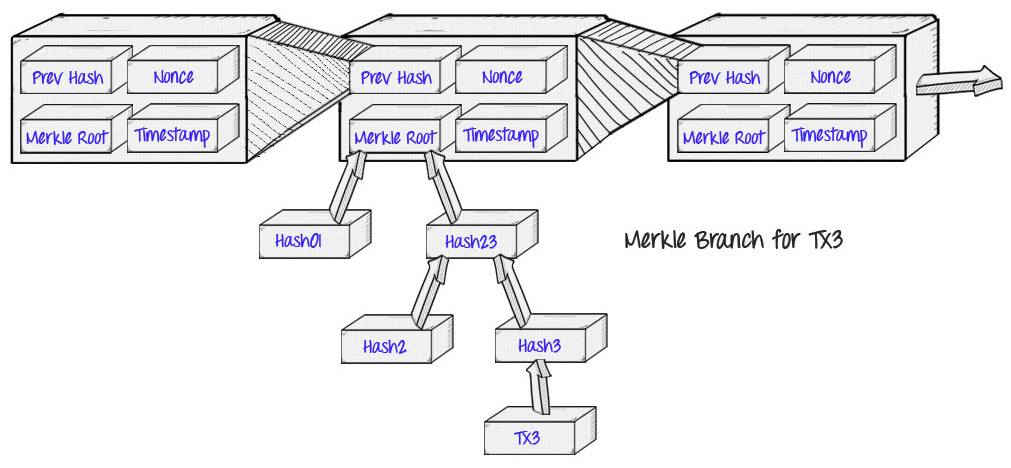
The profit that this supplies is the idea that Satoshi described as “simplified fee verification”: as an alternative of downloading each transaction and each block, a “gentle consumer” can solely obtain the chain of block headers, 80-byte chunks of information for every block that comprise solely 5 issues:
- A hash of the earlier header
- A timestamp
- A mining issue worth
- A proof of labor nonce
- A root hash for the Merkle tree containing the transactions for that block.
If the sunshine consumer desires to find out the standing of a transaction, it could actually merely ask for a Merkle proof exhibiting {that a} specific transaction is in one of many Merkle timber whose root is in a block header for the principle chain.
This will get us fairly far, however Bitcoin-style gentle shoppers do have their limitations. One specific limitation is that, whereas they will show the inclusion of transactions, they can not show something in regards to the present state (eg. digital asset holdings, title registrations, the standing of economic contracts, and so forth). What number of bitcoins do you’ve gotten proper now? A Bitcoin gentle consumer can use a protocol involving querying a number of nodes and trusting that no less than certainly one of them will notify you of any specific transaction spending out of your addresses, and it will get you fairly far for that use case, however for different extra advanced functions it is not almost sufficient; the exact nature of the impact of a transaction can rely on the impact of a number of earlier transactions, which themselves rely on earlier transactions, and so finally you would need to authenticate each single transaction in the complete chain. To get round this, Ethereum takes the Merkle tree idea one step additional.
Merkle Proofs in Ethereum
Each block header in Ethereum accommodates not only one Merkle tree, however three timber for 3 sorts of objects:
- Transactions
- Receipts (primarily, items of information exhibiting the impact of every transaction)
- State
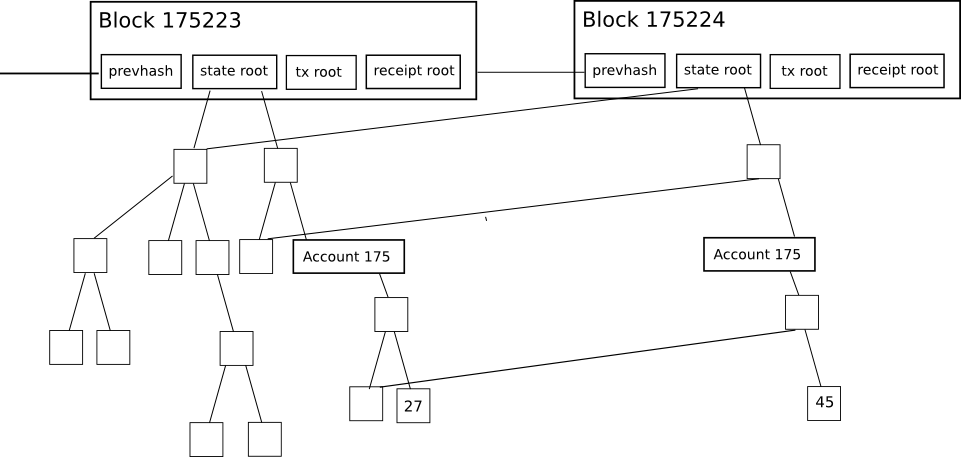
This permits for a extremely superior gentle consumer protocol that permits gentle shoppers to simply make and get verifiable solutions to many sorts of queries:
- Has this transaction been included in a selected block?
- Inform me all situations of an occasion of kind X (eg. a crowdfunding contract reaching its aim) emitted by this handle prior to now 30 days
- What’s the present stability of my account?
- Does this account exist?
- Fake to run this transaction on this contract. What would the output be?
The primary is dealt with by the transaction tree; the third and fourth are dealt with by the state tree, and the second by the receipt tree. The primary 4 are pretty easy to compute; the server merely finds the item, fetches the Merkle department (the listing of hashes going up from the item to the tree root) and replies again to the sunshine consumer with the department.
The fifth can also be dealt with by the state tree, however the best way that it’s computed is extra advanced. Right here, we have to assemble what might be referred to as a Merkle state transition proof. Primarily, it’s a proof which make the declare “should you run transaction T on the state with root S, the consequence can be a state with root S’, with log L and output O” (“output” exists as an idea in Ethereum as a result of each transaction is a operate name; it isn’t theoretically essential).
To compute the proof, the server domestically creates a pretend block, units the state to S, and pretends to be a light-weight consumer whereas making use of the transaction. That’s, if the method of making use of the transaction requires the consumer to find out the stability of an account, the sunshine consumer makes a stability question. If the sunshine consumer must verify a selected merchandise within the storage of a selected contract, the sunshine consumer makes a question for that, and so forth. The server “responds” to all of its personal queries accurately, however retains observe of all the information that it sends again. The server then sends the consumer the mixed information from all of those requests as a proof. The consumer then undertakes the very same process, however utilizing the supplied proof as its database; if its consequence is identical as what the server claims, then the consumer accepts the proof.
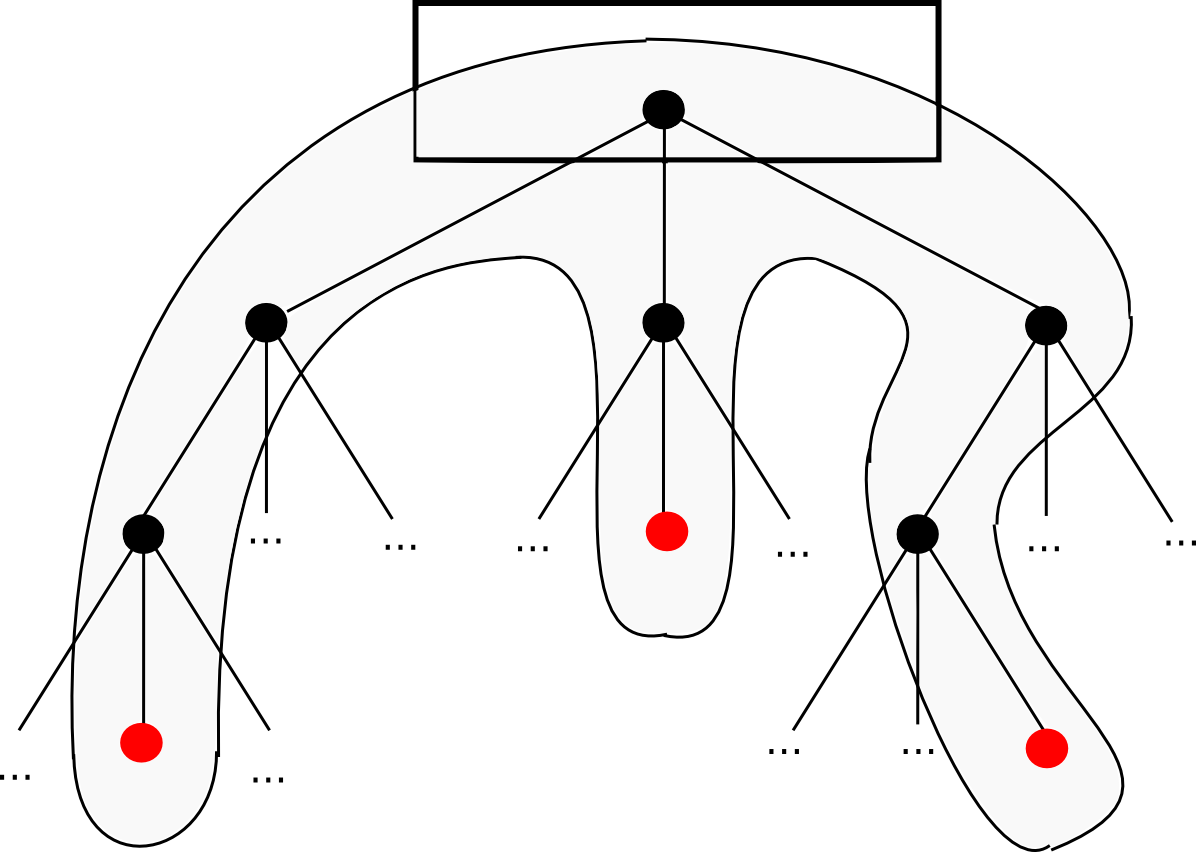
Patricia Bushes
It was talked about above that the best type of Merkle tree is the binary Merkle tree; nevertheless, the timber utilized in Ethereum are extra advanced – that is the “Merkle Patricia tree” that you simply hear about in our documentation. This text will not go into the detailed specification; that’s greatest achieved by this article and this one, although I’ll talk about the fundamental reasoning.
Binary Merkle timber are excellent information buildings for authenticating data that’s in a “listing” format; primarily, a sequence of chunks one after the opposite. For transaction timber, they’re additionally good as a result of it doesn’t matter how a lot time it takes to edit a tree as soon as it is created, because the tree is created as soon as after which ceaselessly frozen strong.
For the state tree, nevertheless, the state of affairs is extra advanced. The state in Ethereum primarily consists of a key-value map, the place the keys are addresses and the values are account declarations, itemizing the stability, nonce, code and storage for every account (the place the storage is itself a tree). For instance, the Morden testnet genesis state seems as follows:
{
"0000000000000000000000000000000000000001": {
"stability": "1"
},
"0000000000000000000000000000000000000002": {
"stability": "1"
},
"0000000000000000000000000000000000000003": {
"stability": "1"
},
"0000000000000000000000000000000000000004": {
"stability": "1"
},
"102e61f5d8f9bc71d0ad4a084df4e65e05ce0e1c": {
"stability": "1606938044258990275541962092341162602522202993782792835301376"
}
}
In contrast to transaction historical past, nevertheless, the state must be steadily up to date: the stability and nonce of accounts is usually modified, and what’s extra, new accounts are steadily inserted, and keys in storage are steadily inserted and deleted. What’s thus desired is a knowledge construction the place we will shortly calculate the brand new tree root after an insert, replace edit or delete operation, with out recomputing the complete tree. There are additionally two extremely fascinating secondary properties:
- The depth of the tree is bounded, even given an attacker that’s intentionally crafting transactions to make the tree as deep as potential. In any other case, an attacker may carry out a denial of service assault by manipulating the tree to be so deep that every particular person replace turns into extraordinarily sluggish.
- The foundation of the tree relies upon solely on the information, not on the order wherein updates are made. Making updates in a distinct order and even recomputing the tree from scratch mustn’t change the foundation.
The Patricia tree, in easy phrases, is probably the closest that we will come to reaching all of those properties concurrently. The only clarification for the way it works is that the important thing below which a price is saved is encoded into the “path” that it’s a must to take down the tree. Every node has 16 kids, so the trail is decided by hex encoding: for instance, the important thing canine hex encoded is 6 4 6 15 6 7, so you’d begin with the foundation, go down the sixth baby, then the fourth, and so forth till you attain the tip. In observe, there are a number of additional optimizations that we will make to make the method way more environment friendly when the tree is sparse, however that’s the primary precept. The 2 articles talked about above describe all the options in way more element.





